If you are using Chrome, click the red hand button at the top right of the screen:

Then select: Don't run on pages on this site
If you do it correctly, the red hand will turn to green and you will no longer see this message.

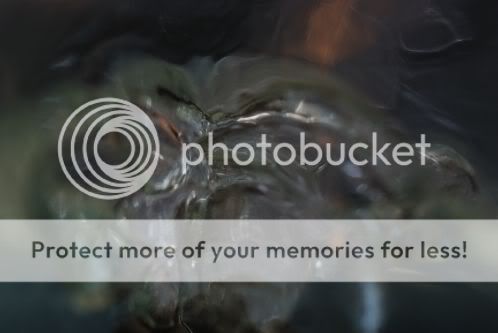
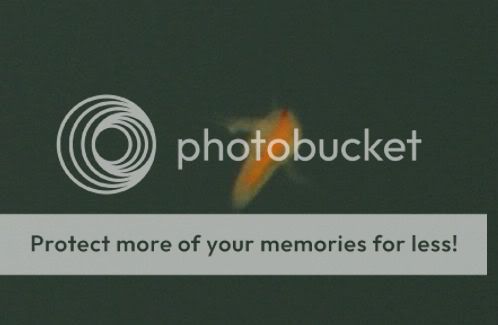

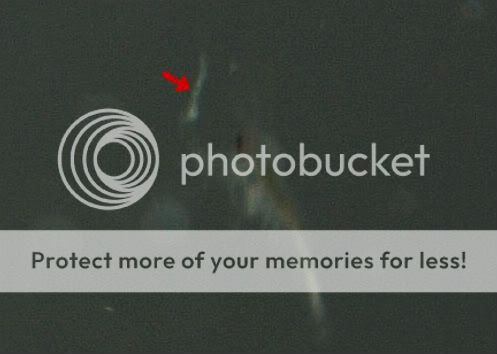
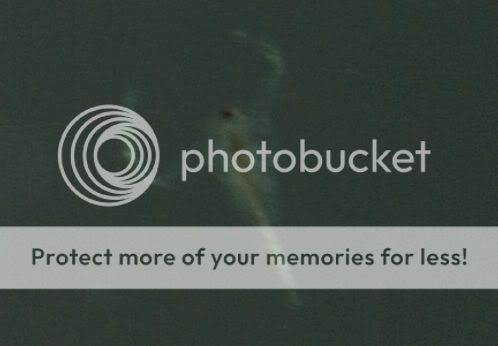
The bad news is that Wal-Mart was completely out of aeration stones and somebody forgot to buy purified water while there.
The good news is that Wal-Mart did have some aquarium pumps. I bought the smallest they had for about $8.00 (US) and some tubing for another $2.00 - $3.00.
I brought it home, boiled the tubing, heated one end and pinched it closed with pliers. Then I drilled a few dozen very small holes in the closed end with a dremel tool and let the pump run the whole time to purge any build-up of fumes or chemicals inside the pump diaphragm. Once the tubing was ready I connected it all up and sent the poor little sea monkeys on a ride.
The pump is made for 10 to 20 gallon tanks. They're in a jar with 32 ounces of water (about 1/40th of the water the pump is built to aerate. So I moved the tube so that it just blows bubbles at the very top of the water along the edge of the jar. It still keeps the water stirred up and gives them some current to fight but I learned years ago when I had aquariums that one of the key factors in aerating a tank is to keep the water moving. The air exchange takes place mostly at the surface of the water where it's in contact the air. Bubbles help but just keeping the water moving so that the water at the surface is constantly cycling, shifting and rotating from the top to the bottom of the tank is the key.
I was able to confirm at least 5 live sea monkeys which should be enough to carry on the colony if I can get at least 3 or 4 of them to live to adulthood. I'm still trying to find out how long that takes. At one time I thought I saw six but couldn't confirm this.
I also noticed one that seemed to swim, then stop, then swim again. And his swimming didn't look right. It looked like a struggle. So I grabbed the magnifying glass and took a closer look. Something was hanging from him. My best guess is that he was molting a shell. I watched him as he stopped swimming and drifted all the way to the bottom. That worried me a bit.
So what have I learned about sea monkeys today? First of all, they're classified as branchiopods. They don't actually have a brain but instead have two distinct bundles of nerves called "ganglia" much as with ants. One nerve bundle is below the gut and the other is in the head. The one in the head is near the sea monkey's kidneys which also reside in the head. Baby sea monkeys have three eyes and lose one as they transform into adults. They have a heart located dorsally in the torso and hemoglobin in their blood to transport oxygen. Sometimes blue-green algae which they eat, will metabolize and cause them to take on a reddish color. But if the sea monkey turns beige or tan, it may be an indication that they have too little oxygen in the water.
COMMENTS
Hopefully you can keep the colony going. The 2 ganglia is actually an evolutionary -distant- cousin to us. We have the brain, of course, and the second would be our gut which has the second highest number of nerves outside the head. There was a book written not to long ago on the "brain in our stomach" or something like that.
Anywho good luck.
have you tried exposing them to black light?
No I haven't tried that. Do they glow?
The sea monkey saga isn't going well. One day I had dozens and the next I counted, one... two, three...
:-(
So I did some more digging around on Google and it seems that even though mine have more surface area (oxygen/water exchange room), than the standard tank, baby sea monkeys need far more oxygen than they do in the adult stage. That would have been nice to know but it isn't mentioned in any of the standard instructions I've seen.
They also suggest feeding them on the fifth day (today), and after a close friend had a bad experience, we reasoned that a group of pin-point size baby sea monkeys probably require far less food than a group of ½ to 3/4-inch adults. So I gave them only a tiny bit of the green powder from the tip of a knife blade and again aerated the tank (pickle jar).
A second careful count revealed at least 4 sea monkeys still swimming around. There may have been a fifth but the contour of the glass can easily hide such a tiny creature and they're constantly moving around so it's not possible to know for sure unless you can get them all into a single line of sight at one time. One didn't seem to be swimming very well so it may not live much longer.
I'm hoping I'm onto the "secret" of keeping them alive with the aeration two or three times every day but only time will tell. I'm going to try buying an aquarium pump and aeration stone to keep these few alive.

NOTES ON REPRODUCTION
Sea monkeys have a rather remarkable reproduction system. They can reproduce through sexual union or the females can just produce fertilized eggs on their own. So sex seems to be completely optional for them. If there are no good men around, she can do it all herself. The female can give birth to live babies but if the conditions aren't just right with plenty of light each day, the right temperature of water, sufficient oxygen and plenty of food, she'll lay eggs instead.
The eggs won't hatch until conditions are right and will remain cryptobiotically sealed, waiting as much as 50-years if necessary. If their aquatic environment dries up, the eggs remain viable. The next rain or flood can fill the depression with water and if conditions are then right for the eggs, they'll hatch in just a few days.
For something that perhaps seems like little more than a "bug", sea monkeys do have a rather fascinating life cycle. And they've been at this for a bit longer than humans. We've been stumbling around on the planet for .5 to 1.3 million years (depending on the source). Sea monkeys have been around for 100 million years. Another species of "easily" raised aquatic pet are Triops which are larger than sea monkeys and resemble a small horseshoe crab. They've been at this whole life thing for about 250 million years.
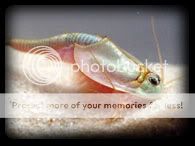
We're new-comers to this ecosystem and as the new students to the class, we've excelled at damaging the environment. Hopefully, once we pass Ecosystems 101, we'll get on to learning how to let the ecosystem thrive. Perhaps watching and raising sea monkeys is a step in that direction.
Well, with some luck this will give an idea of what is going on inside my old pickle jar. This was taken with a cheap digital camera through a magnifying glass and the results are purely consistent with the methods employed -- bad.
Sea Monkeys in Action
The sea monkeys seem to be doing well so far. I'm not supposed to feed them for another 4-days. At this point they're 24-hours old (though some are younger because there are at least 2-dozen now).
Four close together. They never stop moving.

Some are noticeably elongated as compared to yesterday.

The one by the bubble is older.
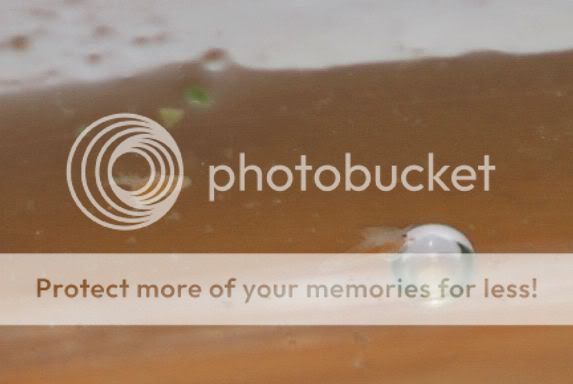
COMMENTS
You realise you'll have to start naming them ;-p
That is so cool...and thanks for the info about them.
...i need a frickin' macro lens...
*camera envy*
You sound like such a proud daddy *smiles*
Wow...mine only yielded about 6. I hope you have better luck. I'm sad over how fast mine went down.
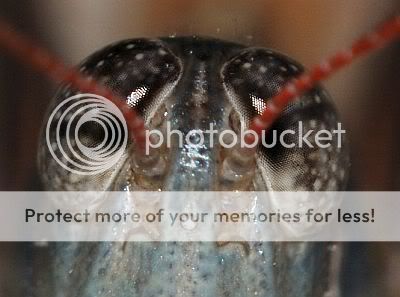

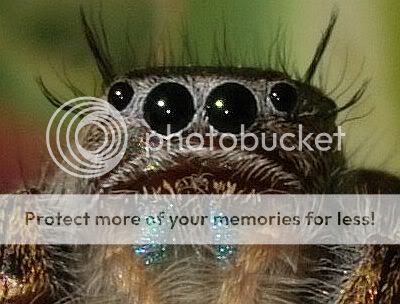
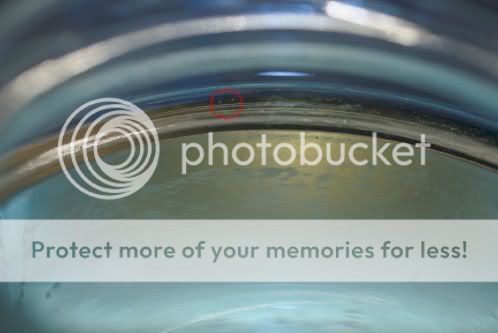
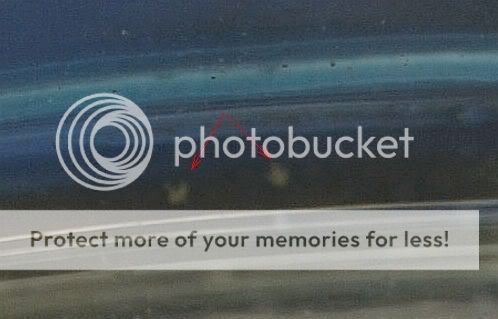
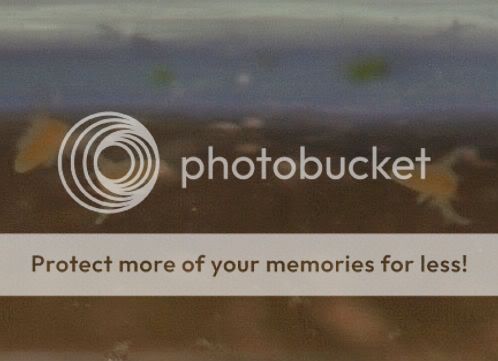
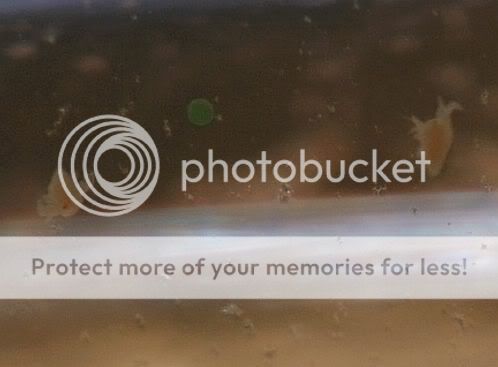
I've now completed 0% of this level. That's somehow so fitting that I'm tempted never to update.
COMMENTS
The one that gets me is "your" and "you're".
-_-
It's just one of those things that irks me to ginormous proportions.
Odd how rabbits are cute, cuddly and soft and rats are thought of only as the plague-bearing sewer scum of years past. I'm tempted to suggest that a rat is just a rabbit, streamlined to hide in pipes instead of bushes. But here are other differences. The built-in cooling system of the rabbit is in the front (ears), while the cooling system of the rat is in the back (tail). The most notable difference seems to be in the desire to give and receive affection. Rabbits tend not to be terribly affectionate. Rats, on the other hand, can be very affectionate and once the time is taken to build their trust, they practically demand attention and affection.
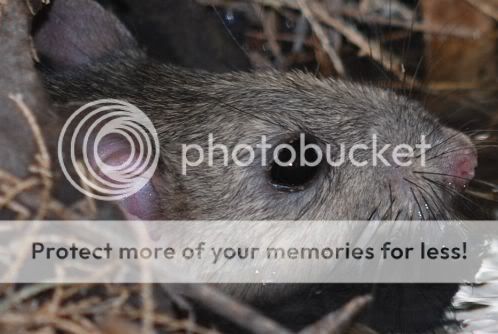
They're not the dirty animals of stereotypical perception. Take a good look. This is a wild rat with that characteristic curve above the nose. Take a look at the ears of your domestic cat. Now look to the ears of this wild creature. Which one shows the better hygiene habits?
COMMENTS
Rats rule. We had a pet rat named Freja. She liked to gently nibble on people's fingernails, touch noses with the dogs, and sit on someone's shoulder.
I've never viewed rats as dirty disease carrying animals. Just some other small animals trying to make a living :p
I had a huge big old Albino once. It was mean and those red eyes made it look rabid. It used to chase my Jack Russell Terrier cross all around the garden, which the dog found fun and exciting, unrealising that it would have knawed it's little head of if it ever did catch it.
Rats are gentle creatures if treated properly. We have had a few rats as pets over the years and the children loved them. Never had a rabbit... Had some friends that had some rabbits, it was unpleasent...
Rats, when tamed and treated properly, are the very best of the "pocket pets". They tend to bite far less frequently than do hamsters, gerbils and mice.
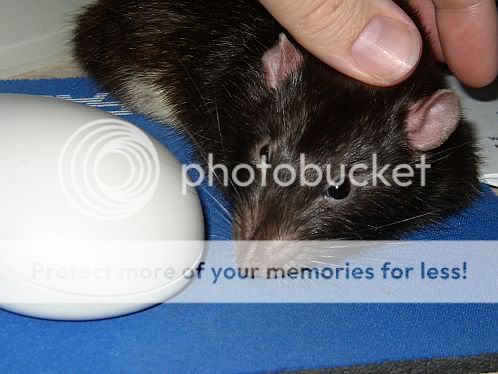
This was my most fondly remembered companion. He did have a tendency to become jealous of all the attention received by my computer mouse and would often curl up beside it to steal some of the petting seemingly offered to the plastic input device.

But make no mistake. Though most of the rats I've had never bit, when pressed into a situation of competing for dominance, a rat will respond to its instincts. This was the result of one such encounter. I was petting the rat while looking elsewhere and I had a friend over which likely triggered the rat's need to secure a position within the hierarchy. I felt a quick twist and a sharp pain. When I looked, I found that with a single quick bite, he'd cut over half way through my finger.
He and I had a "discussion" about his attempts at dominance the next time he began to behave in an aggressive manner. It was hard for me to so thoroughly intimidate him by poking my finger at him and speaking so sternly that he eventually cowered in a corner of a chair. But from that point forward, I never had another problem. The hierarchy had been cemented and he didn't seem to mind playing second-banana from that point on.
He died more than a year later while sleeping. I arrived home from work just after he stopped breathing (his body still warm and soft). I miss him.
Ahhh that story made me tear up Beastt.
And I have enjoyed looking at all the pictures, look forward to the wet weather to stop so I might go out and take a few pictures.
Wonderful work.
Thank you, VampireWitch and everyone else who has taken the time to look, to wonder and to respond. Rats are wonderful creatures and I do miss mine very much. I remember how he used to seem to know when the webcam was on and when I was visiting with someone who had.... shall we say "less than a natural love for them". If one could live in a memory...
I've been a bit neglectful of recent. I've taken a few shots over the recent weeks but, in knowing that nothing was really special, I've neglected to even copy them to my hard drive and give them a look. So let's take a look at what has been sitting there on the memory card.
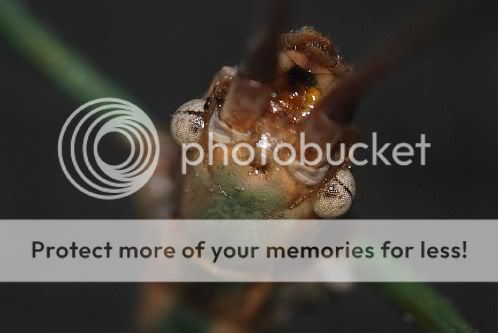
Yes, walking sticks do have a face.
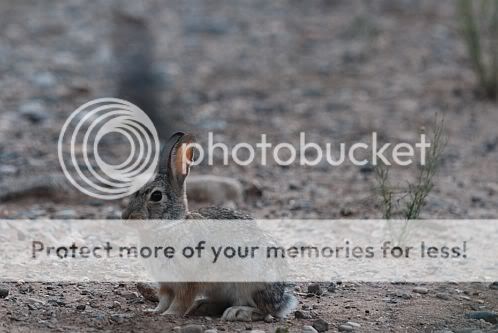
I'm always tempted to wonder if it's one of mine. I've raised five of these over the years. Each season sees a few babies separated from their mother. They get the run of my home which makes it a bit easier to turn them loose when the time comes. "Easier", not easy.
The odd thing here is that funny dark blur behind the rabbit. I didn't have nearly as much light as I needed but the rabbit was holding still and I was crumpled into a ball on the ground attempting to brace the camera. That dark blur is a quail running by in the background which shows the true speed of the shot.

Why is he here? Because he's an outdoor cat. He lives in nature and bears the scars across his nose, ears and face. He'd have it no other way.
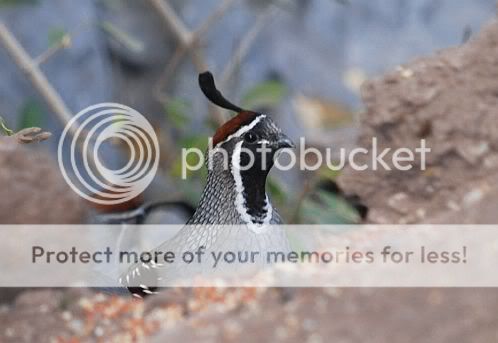
The noble desert quail in all his color and glory. A quick peek up from his windfall of seed allowed one opportunity to capture an image and analyze the fine detail of his majestic markings.
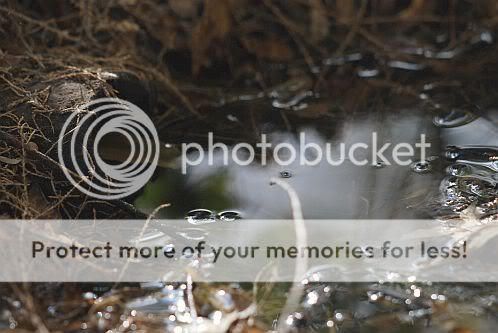
Just a drain pipe. But a drain pipe with a purpose if you're living in the wild and counting on your cunning, your instincts and your endurance of unpleasant environments in order to survive.
Wait for it...

Better not to trust that large creature with the flashing device. The water is rising but I'm not coming out with him there. Best duck back into the pipe.

Still there, eh?
I watched the little pool of water at the entrance to the pipe. Ripples across the water betrayed his appearance before he poked his nose out. There is no time for such a creature to be annoyed by the water or even by the fly frolicking on his head. This is a game of stealth, of judgment and of life and death itself. It's a game we've forgotten how to play. Instead, we now think we've engaged nature and emerged a winner after spending our nights in a camper and our days sitting quietly with a rifle and binoculars waiting for any of these creatures -- creatures which fight their entire lives for the privilege of the next breath -- to step into our sights at which point we twitch a finger and bring all of their hard-won battles to a sudden and disrespectful end.
COMMENTS
Incredible. A series of stories through images. It's the easiest for me to read. Is that sad? Words on a screen start to blend together and it's hard for me to follow along.
You take wonderful photographs, I can feel what it's like to be there and watch these creatures, I can even feel what it must be like to be the mouse.
It also looks like it's pretty intense being a walking stick.
Shame on you for neglecting. Shame.
Your photography is amazing.
Thank you so much, Morrigon. I've seen what you can do with a camera so I have immeasurable respect for your opinion. These were, however, mostly shots of convenience. There is nothing for scale but that drain pipe is about 6-inches in diameter and the creature taking refuge within is a wild rat. I could have spent the rest of the day crumpled into my vantage point, camera poised, just waiting for a glimpse. There is nothing quite like the feel of a camera and the need to remain quiet, to stay crumpled and braced for that one moment when the animal, the equipment and the opportunity merge. I get my shot and the animal gets to keep living it's life.
You've described perfectly what it's like for me and I'm sure most photographers.
All of my pictures are really shots of convenience as well. I tell the model what I'm looking for, and let them move, taking pictures all the while.
Posing sucks!
Nature is the best for that, never posing, never waiting. You're either there and taking the picture, or you sigh, glad that you got to see it and yet wishing you had captured the picture so you could show that moment to others.
The best images are always the ones between clicks of the shutter, I suppose. There is something so special and promising about having the potential to capture a gorgeous moment, or even one of great tragedy. For me, wildlife is best. The creatures with which we share the planet are reminders of what life really is, even for those of us too lame to experience it for ourselves.
I agree. Hence I will run up a mountain side in the rain to capture the beauty of a wild buffalo gazing with its calf.
And I completely agree with your commentary on nature, survival and hunting... if hunting were to be truly a sport we would do it only with what nature has given us as our own survival tools - wit, logic and whatever we could extract from our environment.
Not dressed in gore-tex camoflauged suits, sitting high above in a metal tree-stand using a rifle powerful enough to kill an elephant from 1000 yards. That isn't sport.
Beautiful.
Thank you for letting us come along with you. Your words and images always capture my imagination. I love the way the cat resembles a mountain lion and before I read your words, I wondered if the bunny might be one of yours...but don't you make me feel sympathetic for that rat. I know your game!
Absolutely delightful
Wonderful shots Beastt.. what is your camera and what lens were you using?
Thanks for the kind words everyone and to answer the last question, I was using my Nikon D80 with a Sigma 150mm macro lens and 1.4x teleconverter (actual focal length 315mm). Certainly not the right lens for the photos but as mentioned, they were shots of convenience. My Nikon D200 had a Nikon 60mm macro lens on it and the two in the bag were a Nikon 70-300mm VR lens and a Nikon 18-135mm f/3.5-5.6.
Given the low light, I really didn't have an ideal lens available. I can't remember if I had my SB-600 speedlight mounted but I think I was trying to use just the built-in flash.
When the reality finally penetrates and you accept that you'll never again know the caring touch of another human being, something about life changes.
It is, in some ways, perhaps a form of clarity. But it carries with it a sense of cold isolation, rather like sitting on the moon and watching distant lives play out on a monitor. Emotion becomes both a fading memory and a continual torment.
Very odd, this.
COMMENTS
Never is a very long time.
Fortunately for me, I have a pretty good jump on it.
It sounds like death, and you are nowhere near there!
COMMENTS
-
Sinora
16:00 Nov 29 2008
I hope they live, I've never heard of them except in yours and Joli's journal.